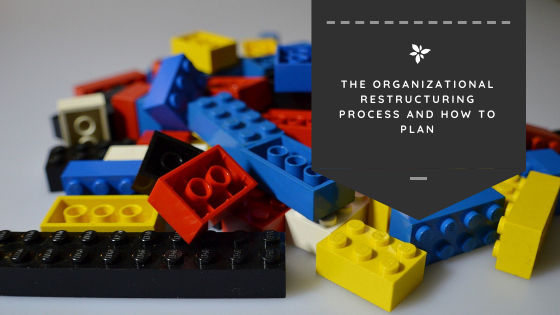Using Org Charts to Plan for a Restructure
Restructuring an organization isn’t the simplest thing in the world, however, proper planning and preparation can make a huge difference and streamline the process. Still, it is not something to be taken lightly; business renewal is never easy, nor fun, and big decisions need to be made that can greatly affect a company, its future viability, and its employees.
For some, restructures are a regular occurrence. However, in contrast, some companies may never go through one at all. If you are considering a restructure or are part of the team tasked with evaluating whether one is needed and then putting the wheels in motion, it is important to answer one question: What is the purpose of the restructure?
Visualizing Current Organizational Structure
Prior to planning for or embarking upon an organizational restructure, it is important to visualize its current structure. Only with this information can you have a real view of how the organization currently operates and where there may be skills gaps and shortages, for example.
You could go ahead and print off reams and reams of paper that list each and every employee and try to organize these into departments, roles, and other responsibilities. This is time-consuming though, not to mention inefficient, difficult, and ample scope for mistakes to be made.
The best way to visualize organizational structure is through the use of an org chart.
Using software like Organimi, you can create structured org charts using drag-and-drop functionality. In a matter of minutes, you can import existing data from several third-party platforms and sources and begin building interactive and dynamic charts that represent your entire organization, and any teams or departments
Org charts and org chart software has a whole range of useful and valuable applications in addition to this, too. You can read our blog to find out more.
Planning for the Restructuring Process
Once you have a clear picture of the organization’s current structure and you have defined goals and expectations—goals should be established around workforce expenditure, target headcount, and performance, and should be both specific and measurable—it is possible to go ahead and begin planning for the restructuring process.
1. Establish the Transition Management Team
It is important to assign certain employees to specific roles throughout the restructure so that they can own and oversee specific processes. Identify the best candidates, typically management-level individuals, with the required skills and knowledge to get the job done.
Restructure management roles can include everything from organizational structure design experts, who can model the restructure based on reports and plans, to data analysts, who can collect, validate, and manage data.
2. Communicate the Plan Widely
It is important to be open and honest when dealing with a major organizational change. Leaving employees in the dark will only lead to resistance and upset in the future.
Once everything is set in stone, this can be done in multiple ways. One way to communicate your plan(s) and potential future structure(s) is to create a role-based org chart. This will allow employees to visualize and inspect the new structure and what has motivated it, leading to wider understanding from the core team.
3. Carry Out Skills Assessments
The whole point of restructuring is to recognize strengths and patch up weaknesses. This cannot be done without assessing the skills of both teams and individual employees.
Talk to line managers, build a central list of core competencies, and then use any data collected to influence the restructure. This way, you stand a better chance of the restructure being a success because you are not carrying out guesswork—the employee that you think could be the best fit for a post-restructure job may well not be.
4. Assess Suitability for Roles
It is not only skills that determine whether employees are suited to roles. Keep an eye open for relationships within and between teams, what their dynamics are like, and if there are any personal factors or traits that may make an employee unsuitable for a new role or their current role post-restructure.
To assess suitability for roles, you will primarily rely on reports and feedback from line managers and employees directly. The last thing you want is an employee dragging what would be an otherwise perfect team down after a major restructure.
5. Prepare for Difficult Conversations
Staff turnover and role changes are part of any organizational restructure; this cannot be avoided. Organizational needs change and certain roles or teams become redundant. You need to be prepared to drastically change some employees’ roles and let some people go.
To that extent, make sure you prepare severance packages well in advance and that they are fair and comply with the law. Regularly revisit these during the restructuring process, too.
All Restructures Are Different
Just like all organizations are different, all restructures are, too. The above list is not the be-all and end-all. There are so many different ways you can plan for a restructure and things to account for, we couldn’t possibly list everything here.
Restructuring an organization will always present its own challenges. However, by carefully planning out a strategy for implementing a restructure and communicating it with your team, you pave the way for a far more effective process.
If you are or may be tasked with a restructure, why not use Organimi to make the process a whole lot easier?
If you would like to learn more about what Organimi can do for you and your company, sign up for a free trial today or contact one of the team.

